RF Noise Source Part 2
Having shared the initial success in examining the Noise Com NC3404T noise source from a physical and output connector return loss performance perspective (Post 1), posted on the Fediverse about that activity, and received feedback that turning on the LNA on the TinySA-Ultra might make a difference in observing noise output levels, it is time for a second post on this topic.
There were two issues with the initial TinySA-Ultra test. First, there was a 20 dB "protection" pad on the input to the analyzer (as 32 dB ENR might appear a pretty big/scary number). Second, the TinySA-Ultra built-in Low Noise Amplifier (LNA) had been turned off recently to perform some transmitter harmonic/spurious level tests. Turns out that an instrument "set to defaults" does not change this manual setting.
With these two issues addressed, and the setup reconnected, it was quicly apparent that the NC3404T was indeed putting out broadband RF noise on the SMA jack output. The photo below captures a slow sweep on the SA while manually turning on and off the noise source via the TTL (Gnd to turn-off noise) control pin.
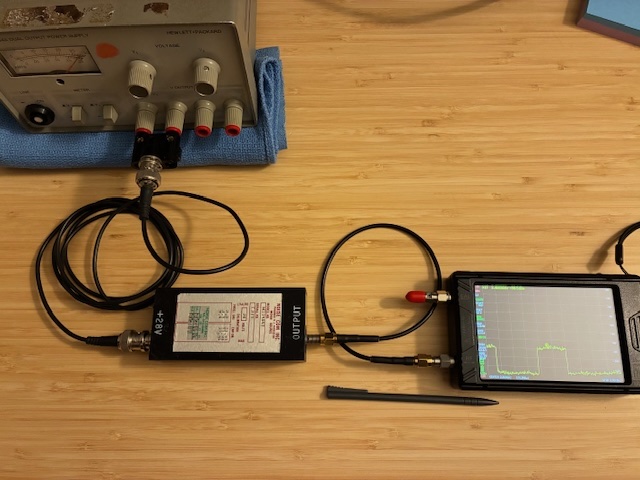
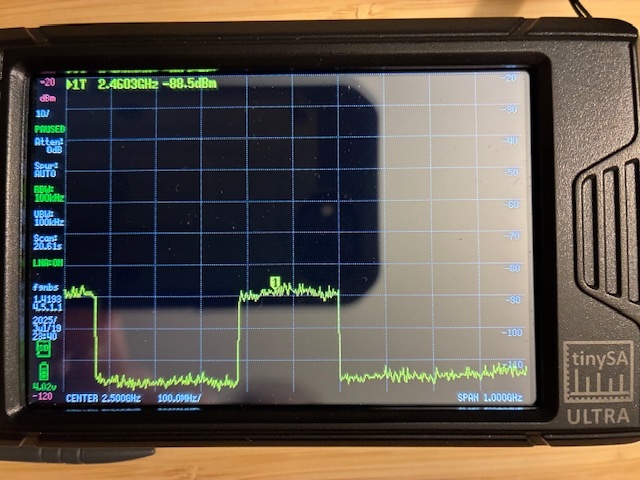
A rough guess of on/off noise level difference is ~28 dB (plus/minus ~3 dB'ish). The exact level is not important at the moment, instead it shows that the source is working, and that a dedicated power supply might be put together for use with this item.
Many years ago, I had purchased a LM2577 DC/DC boost converter with the idea to use it to run a Yaesu VX-8DR fast charger base from a 5V USB power pack (instead of the normal 12V wall wart supplied with the radio system). That project never happened and the LM2577 board was available - so why not use it for this project?
First step was to test the board and confirm it could be set to output the needed 28 VDC. With a +12V input from the bench supply, the 10-turn pot was adjusted until the output voltage was set to approximately +28V.
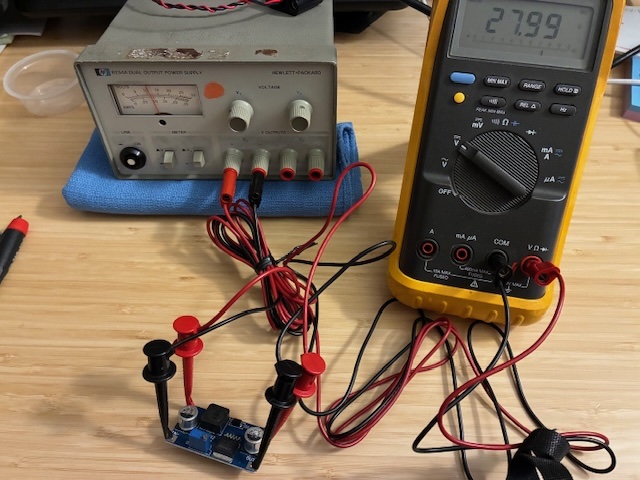
With a power supply approach identified, it was time to think about packaging it to protect the board and make it safe and easy to use (ideally, just plug it in and use it). A survey through the lab extra-parts storage tote yielded these parts: +12VDC @ 2A wall wart, a new-old-stock ARCHER deluxe project case (plastic is easy to work with), and a BNC chassis mounted jack with a short lenth of coaxial cable already attached.
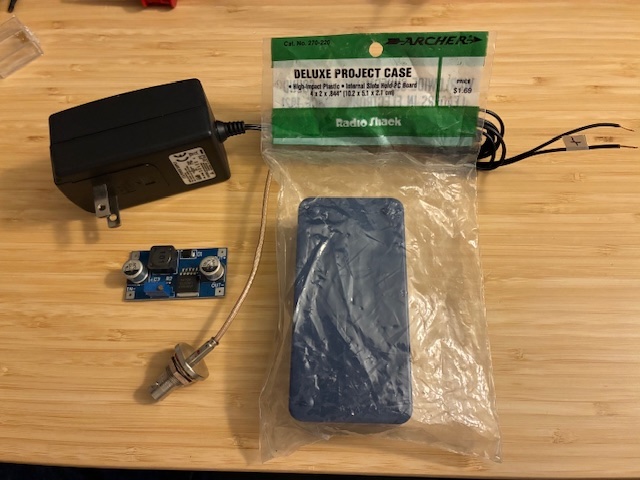
The hardest part of assembling the power supply was drilling the case sidewall for the BNC hole and then enlarging it to accomodate the BNC jack. Cutting, stripping, and soldering the four connections yielded a working 28VDC modular supply box.
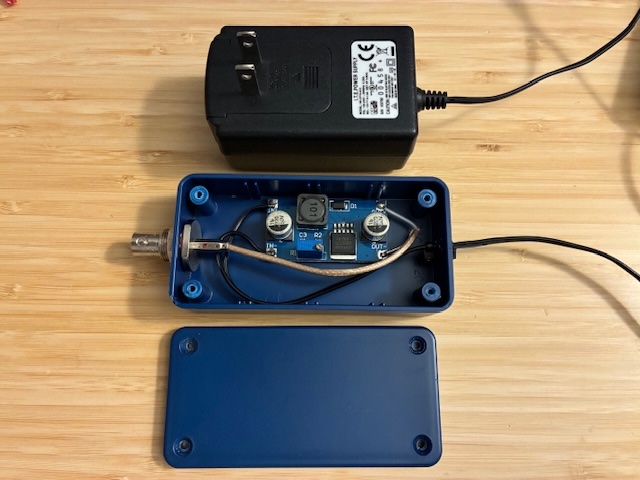
Here is the completed system: Noise source, power supply, and connecting BNC cable. Simple white electrical tape / marker labels are in place. Will print some proper labels later when the label-maker is available.
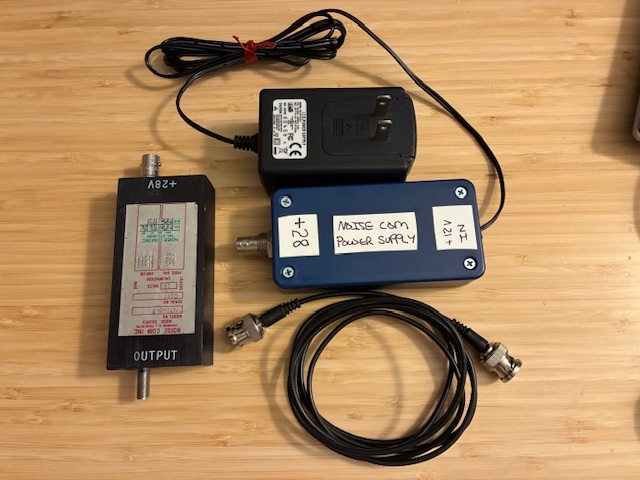
Now that the system is known to be working, it's time to make a few noise measurements and learn how this source might be used in the future. First question: What is the frequency range? (Remember, this unit has ENR specified over only the 2 to 4 GHz range.)
Connecting up a Pluto SDR and firing up SATSAGEN software on the WinPC yields the series of screen captures below.
Test setup: Noise source to RF SMA-SMA cable to 5 dB attenuator pad to Pluto RX input jack. (Note: The presence of the 5 dB pad on the RX input degrades the external noise source level, but not the baseline noise level of the Pluto SDR receiver.)
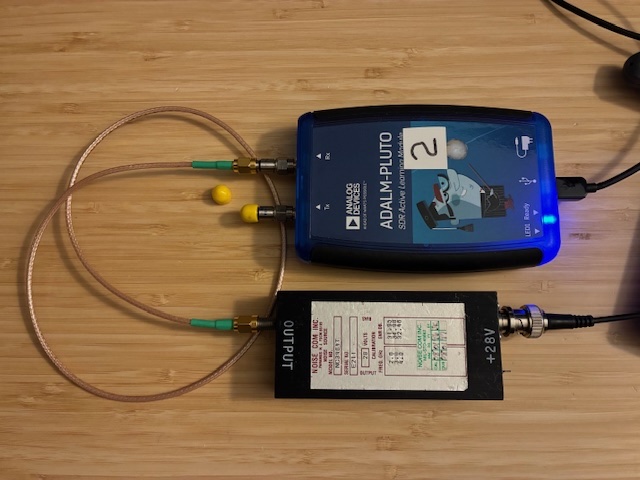
Let's check VHF first: Noise source is ON.
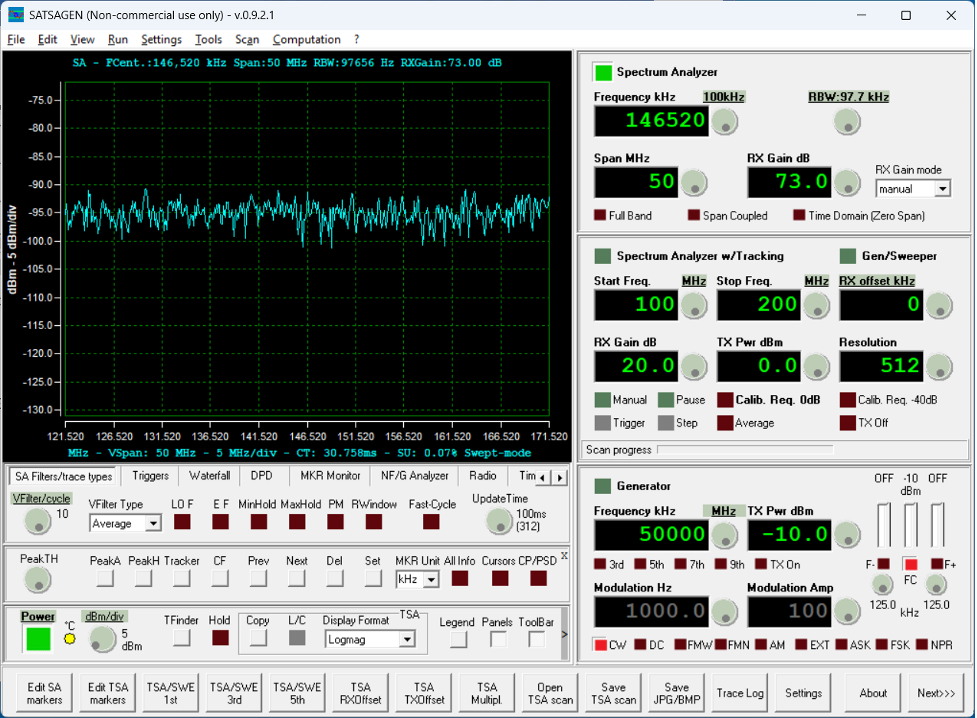
Noise source is OFF. Level drops approximately 20 dB.
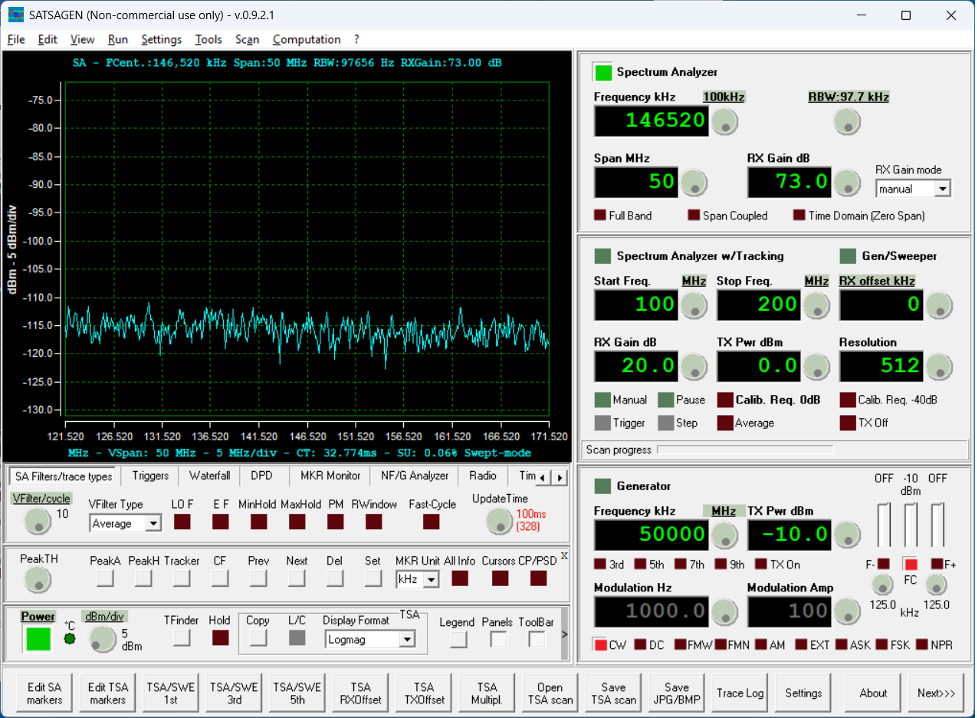
Next, look at 3 GHz (center of the noise source specified range): Noise is ON.
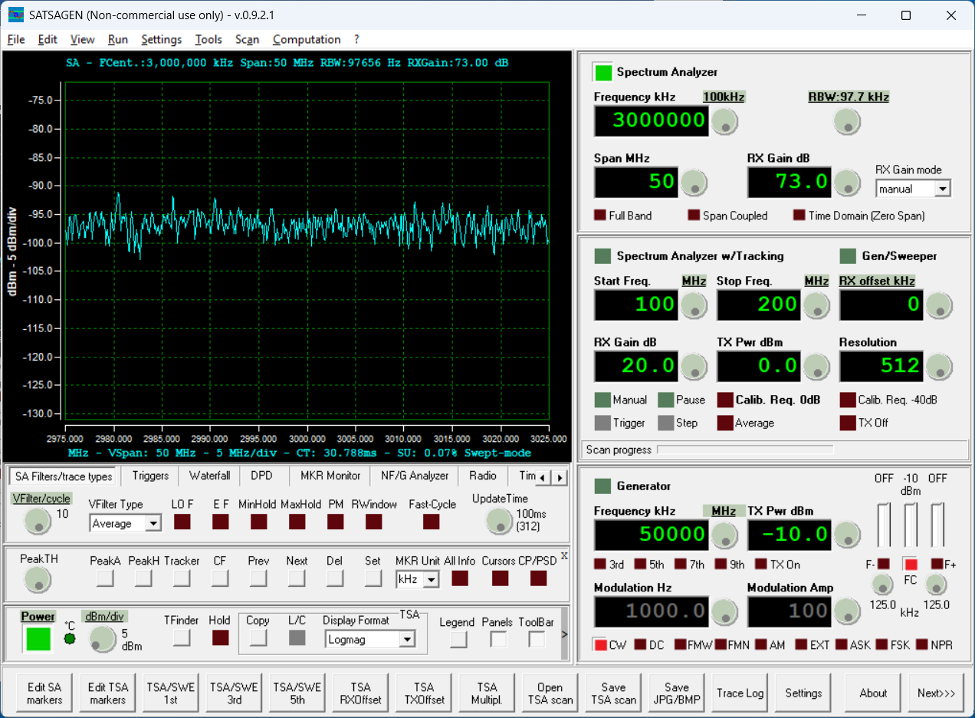
Noise source is OFF. Level drops approximately 15 dB.
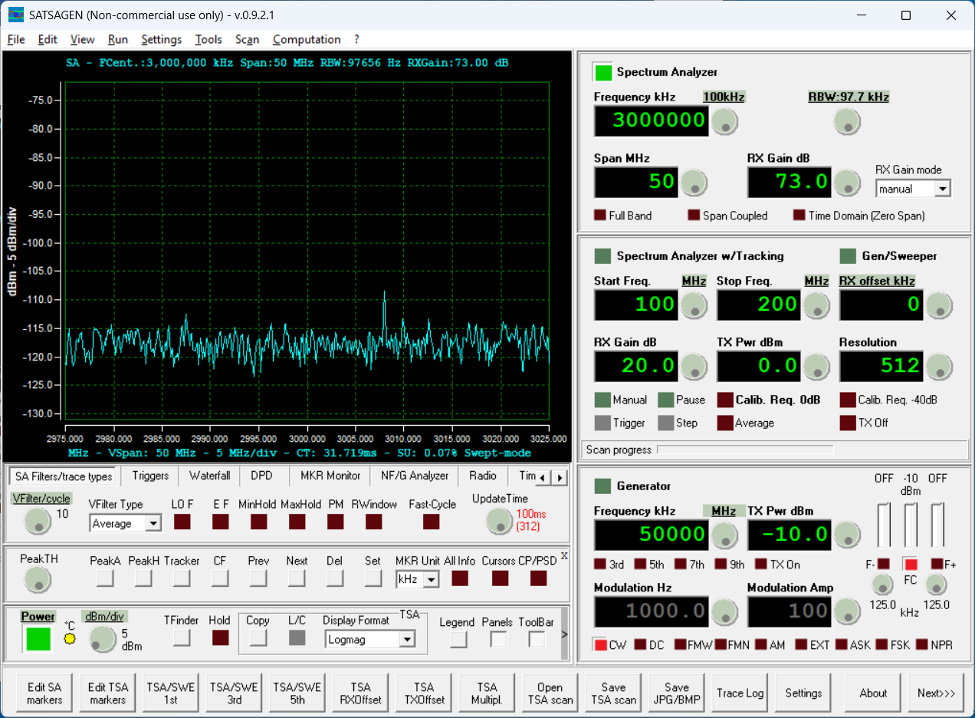
Finally, check down at the lower end of the Pluto SDR operating range: Noise is ON.
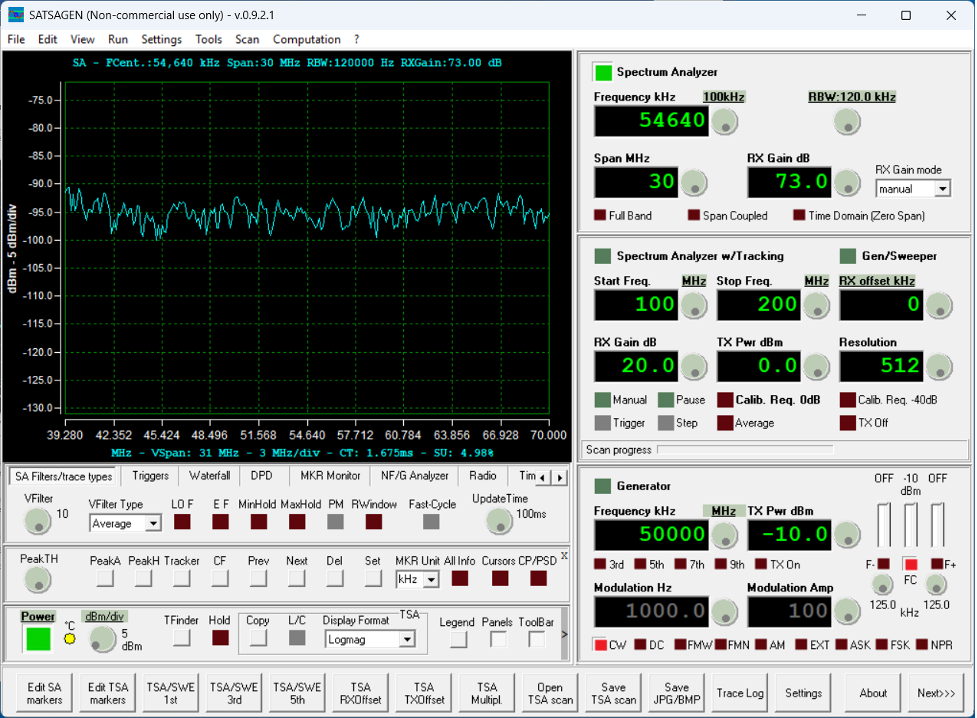
Noise is OFF. Level drops approximately 15 dB.
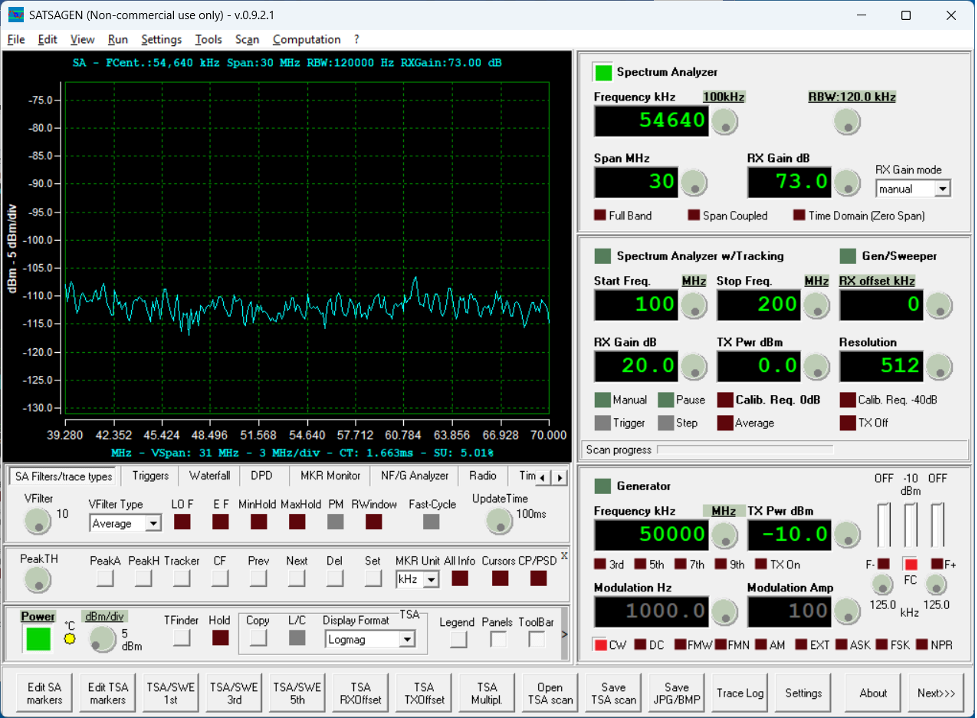
Conclusion: The NC3404T noise source is providing readily identifiable noise output across low-VHF up into lower C-band. For a first look, this looks pretty good!
Next steps: Read up and learn how to use the noise figure measurement functions of SATSAGEN and maybe create the third blog posting on this topic. Will measure a few RF amplifiers as part of that exercise. (Does that Mini-Circuits ZHL-1042 really have a NF of ~6 dB? We can find out soon!)
Author photos taken with an iPhone-16e.